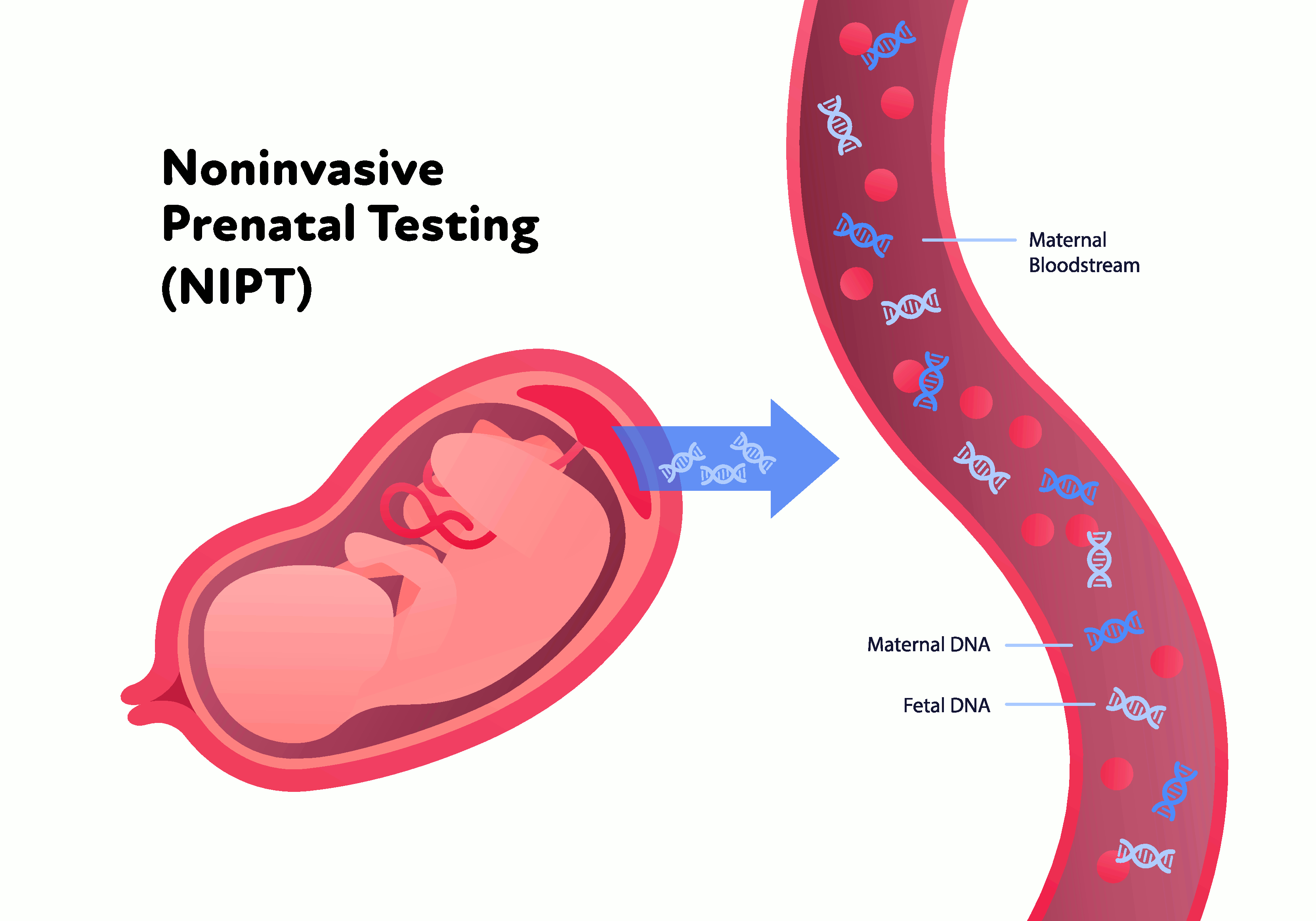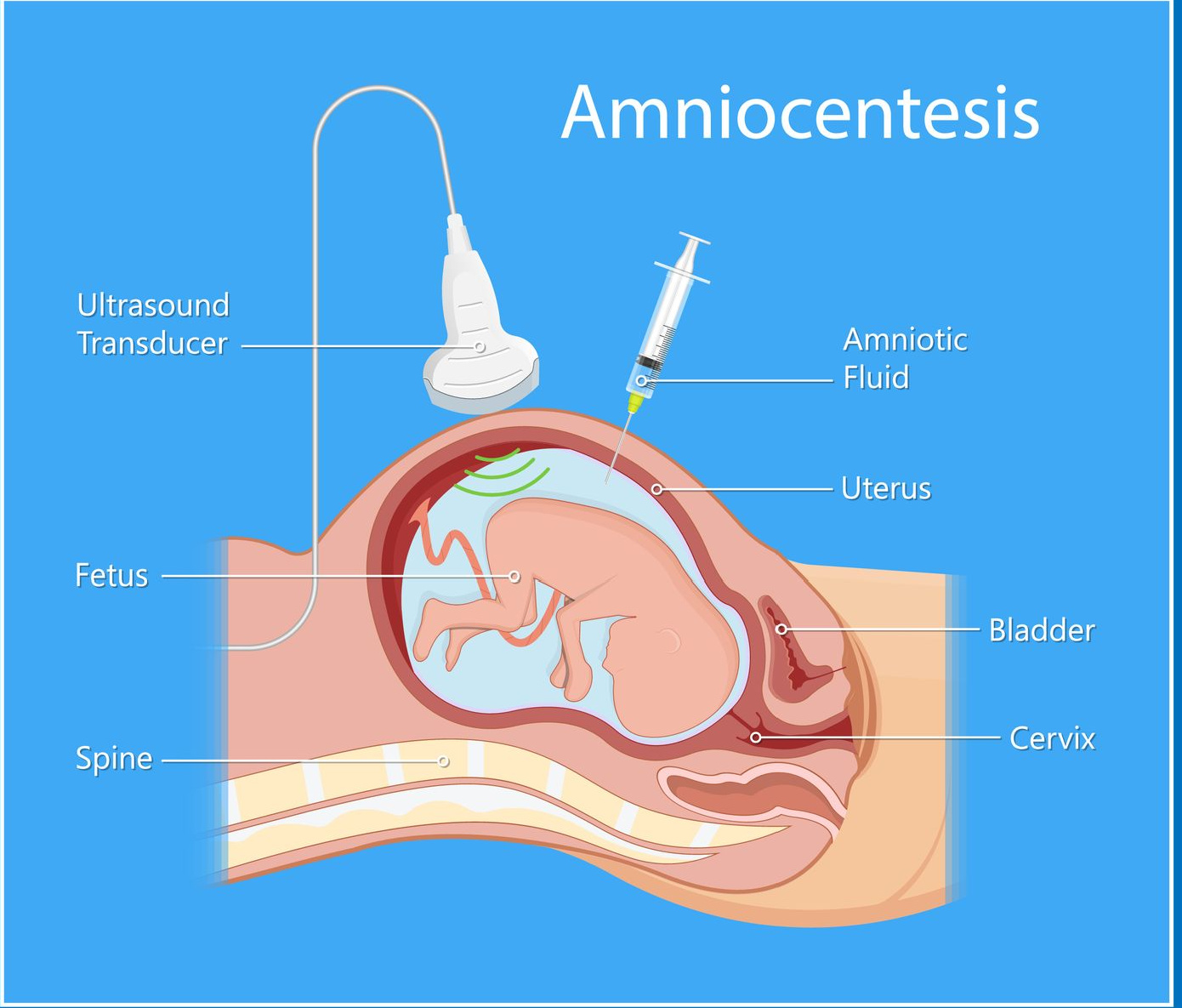
Prenatal Genetic Testing – Procedures used During Pregnancy
Broadly, there are two main categories of screening and testing procedures used during pregnancy to identify the likelihood of genetic conditions in the fetus. These are:
- Non-invasive procedures – for example, maternal blood tests, non-invasive prenatal testing (NIPT), cell-free DNA screening, and ultrasound scans
- Invasive procedures – for example, chorionic villus sampling (CVS) or amniocentesis (amnio)
Many women will be offered some form of routine prenatal screening at different points during their pregnancy. Most commonly, these screening tests will provide results in relation to Down syndrome (trisomy 21 orT21), Edwards syndrome (trisomy 18 or T18), Patau syndrome, (trisomy 13 or T13), sickle cell disease and thalassaemia.
Non-invasive procedures cannot provide a definitive Yes or No diagnosis, they provide screening results which show whether there is a higher chance that the baby will have a genetic condition.
Genetic testing to diagnose conditions
Cutting-edge technologies which make use of advanced karyotyping and next generation sequencing (NGS) provide greater opportunity for parents-to-be to discover if their unborn child is likely to have or has a genetic disorder.
Some genetic testing will require an invasive procedure to collect a sample of cells. Invasive procedures carry a risk of miscarriage, infection and rhesus disease.
The decision to undergo genetic testing may be a difficult one, but the information provided can help parents plan for the future and give doctors the information they might need to care for the baby if the parents choose to continue with the pregnancy.
Types of advanced genetic testing
Non-invasive testing for Chromosomal abnormality
Advances in genetic testing mean that non-invasive prenatal screening tests, using a sample of the mother’s blood, can be used to identify chromosomal abnormalities in a fetus.
Next generation sequencing technology can detect fetal trisomies of chromosome 21 (Down Syndrome), 18 (Edwards Syndrome) and 13 (Patau Syndrome), the most common aneuploidies (conditions caused by missing or extra chromosomes).
It is also possible to determine Turner and Klinefelter syndromes, as well as microdeletion syndromes including Cri-du-Chat.
Conditions caused by DNA abnormalities
Down Syndrome, Edwards Syndrome and Patau Syndrome
Down Syndrome is typified by certain physical characteristics, distinctive to the condition, and a degree of learning disability. The majority of babies with this condition are diagnosed soon after birth, however, prenatal screening can identify a likelihood of Down Syndrome.
Edwards Syndrome is a rare condition which can cause serious medical problems. Babies with a milder form of the condition can survive beyond a year and even into the beginning of adulthood. However, this is uncommon and, unfortunately, many babies born with Edwards Syndrome die soon after birth.
Patau Syndrome is a genetic disorder that in most cases directly affects a baby’s development during gestation. As a result, it can cause miscarriages and stillbirths. If the baby survives, there’s also approximately a 90% chance that he or she will die within the first year of life.
Non-invasive (non-routine) prenatal genetic tests are available which identify specific abnormalities in chromosomes 21, 18 and 13 which, individually, have direct links to the above conditions. Despite the fact these tests can have a predictive value of almost 100%, doctors will typically require an invasive test to be carried out so the results can be confirmed.
Autism
Certain groups of unstable genes can interfere with brain development and this is one of the causal factors behind the complex condition known as Autism Spectrum Disorder (ASD).
Clear indicators of the condition normally appear during childhood and include significant difficulties with communication and interaction with others. There has been a steady rise in the prevalence of Autism Spectrum Disorders. To use the USA as an example, ASD was present in 1 in 125 in 2004 but this rate had risen to 1 in 68 births in 2014.
Postnatal diagnostic platforms exist which require one test to find genetic alterations within the genome of a patient with a specific focus on autism. The analysis includes 45 susceptible DNA regions in addition to 115 genes with a direct link to autism. These tests take approximately 15 days to complete.
Uniparental Disomy (UPD)
If an error occurs after fertilisation in which the embryo inherits a pair of chromosomes (or part of a chromosome) from one parent only, not both, this is called Uniparental Disomy (UPD). This type of genetic abnormality can cause Prader-Willi, Beckwith-Wiedemann and Angelman syndromes.
Prader-Willi syndrome is normally diagnosed soon after a baby is born and can cause behavioural problems, learning difficulties, stunted growth, extreme appetite and more. It is caused by the inheritance of two maternal chromosomes, 15s (deletion of paternal chromosome 15q11-13).
Beckwith-Wiedemann syndrome (BWS), which causes overgrowth, occurs in approximately 1 in 15,000 births. There are a number of characteristics associated with this condition, such as an oversized tongue or an abdominal wall defect. BWS is caused by a variety of imprinting errors relating to chromosome 11p15-5, including the manifestation of two copies of paternal chromosome 11p.
Angelman syndrome primarily affects the nervous system and is characterised by delayed development, intellectual disability, speech impairment and ataxia (movement and balance problems). Around 70% of cases of Angelman syndrome occur when a segment of the maternal chromosome 15 is deleted.
Detection technology is available which makes use of 110,000 oligonucleotides to find genetic abnormalities related to UPD.




